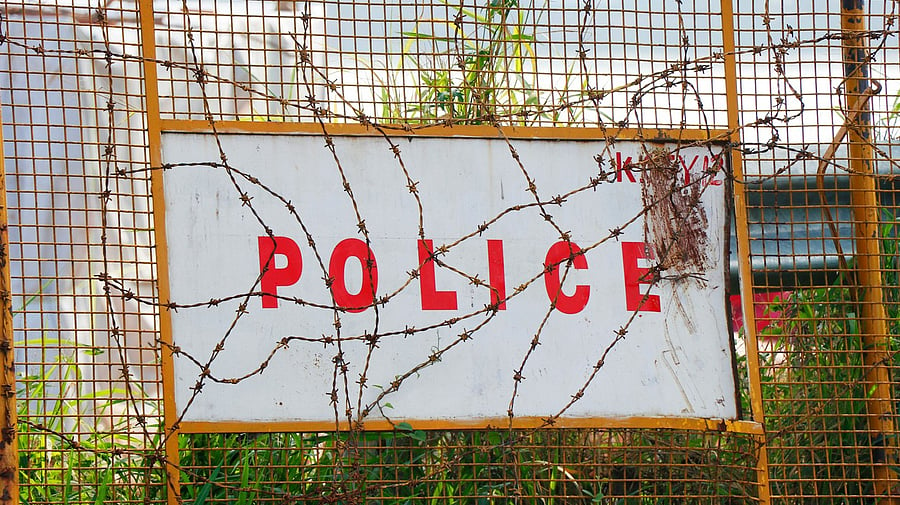
Representative image
Credit: iStock Photo
Ahmedabad: Gujarat police for the past several months have been parading suspects arrested in different crimes in full public view, posting the video of these parades as "police treatment" on its social media handles while issuing warning to those taking law in their hands. This trend has been increasing despite several policemen being held guilty of criminal contempt for ill-treating suspects in custody.
The trend was noticed more when a group of Dalit protesters demanded similar treatment to those arrested for vandalising Baba Saheb BR Ambedkar's statue in Ahmedabad. The police heeded to the demand and paraded two of the accused. Video footages showed the suspect with their hands' tied with ropes, them limping and pleading for forgiveness. Behind them, a crowd was chanting Ambedkar's name.
Last Saturday, X handle of Porbandar SP posted a video footage of a suspect involved in a fight over exorbitant interest rates. The post stated, "For collecting excess interest and injuring the complainant, accused Hitesh Narottam Gohil alias Dhobi is being taught the law by Porbandar district police." The accused was seen in the video tied with a rope and was walking barefoot on the road.
Similarly, on December 22, the official handle of Gujarat police posted a compilation of three video footages with a caption, "Kayde Me Rahoge Toh Fayde Me Rahoge (It will be of your benefit if you follow the law)." The first one showed two hooligans brandishing swords and pushing a few policemen into their van. The hooligans were allegedly terrorising the locals following a gang rivalry in Bapunagar police station area in Ahmedabad.
The second footage showed the same two hooligans tied with a rope, limping while being paraded on the road in full public glare. The third was of the demolition of their houses which were allegedly built illegally.
Most of the district and city police are following this trend. News channels and social media are flooded with such police parading of suspects in police custody and on the road. The trend is apparently increasing despite several past judgements by Gujarat High Court as well as the Supreme Court castigating the police for such acts.
"It is nothing but assertion of police raj and examples of brutality which the police themselves are showing. They are instilling fear among the mass by displaying the persons under arrest in public. In many cases, I have seen the suspects limping that must be due to beatings. This is primitive. Law is so clear that police can't give such treatment to even the guilty ones," said Brijesh Trivedi, advocate and president of Gujarat High Court Advocate Association. He added that in most cases the victims don't complain due to police fear.
Last year, in two such cases, the high court came down heavily on police while holding them guilty of criminal contempt. While dealing with a case in Rajkot where a suspected bootlegger was beaten up and paraded in public who later filed a case in high court, a division bench noted that even in case of suspects being "hardened terrorists", the police had no authority to act against the law.
In another case in which four policemen were held guilty of criminal contempt of court for flogging a group of Muslim men, accused of rioting, in full public view, a division bench of the court said, "Any form of torture or cruelty, inhuman or degrading treatment would fall within the ambit of article 21 of the Constitution, whether it occurs during investigation, interrogation or otherwise. If the functionaries of the government become law breakers it is bound to breed contempt of law and would encourage lawlessness, and every man would have the tendency to become law unto himself, thereby leading to anarchy. No civilised nation can permit that to happen..."
The Supreme Court in 1997 while deciding DK Basu versus State of Bengal and Others case came up with guidelines to stop such cases. The guidelines said, among other things, "The dignity of the person being arrested should be protected. Public display or parading of the person arrested should not be permitted as any cost..."
Despite repeated attempts, Director General of Police, Vikas Sahay couldn't be reached for comments.